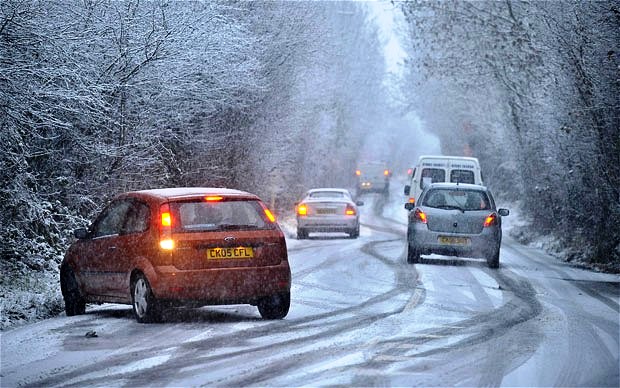Tips For Driving Safely In The Snow

Each year over 25% of weather-related crashes happens on snowy or icy pavements. Statistics show that over 1300 people lose their lives, and over 116,000 people get injured in vehicle crashes due to snow annually. If you live in an area where snow flies, then you must know how difficult it can be to drive during it. Unless you have an auto accident attorney from Bellotti Law, you should be extra careful.
When you drive, you are not only responsible for your own life but also carry the responsibility of the lives of other people in the car. Snowy and icy pavements can cause a lot of difficulties for both beginners as well as expert drivers. If you are looking for some advice on how you can drive safely, then you might want to read on. Here are some top tips that will make driving in the snow much easier.
Driving smoothly is essential
The key to safe driving in the snow is to keep it as smooth as possible. By smooth driving, we mean being smooth with the steering wheel, accelerator, and brakes. If you are driving the car with jerky movements, then tires may unstick easily.
When you are driving smoothly, the tires are able to make a good grip on the slippery road. However, every time you turn the wheel, push brakes, and even move the throttle, it can loosen the grip of the tires. You should try to keep it as smooth as if you are trying to stop the cup of coffee sitting on your dashboard from spilling. The key is to be deliberate, gentle, and as gradual as you can.
Keeping your eyes sharp
Snow tends to get a lot slippery, and as slippery it gets, the farther down the road you should be looking. The farther you look, the quicker you will be able to assess the situation and anticipate what you should do next. Consequently, the more time you can give your brain to think, the better it will be able to assess the situation.
Also, you should slow down for turns. The distance for stopping should be doubled when the road is wet, tripled on snow, and even more on ice. You should give these distances extra attention if you don’t have the experience of driving on snow.
Flashing lights are important
The light, which is presented by the outline of a car with squiggly lines behind it in the instrument cluster, can actually tell you about the traction on a snowy road. If you see this line blinking while accelerating in a straight line, it means that the wheels of the car are slipping. The light communicates from the stability control system and warns you before you get into any trouble.
The light does the same thing when the car becomes unstable during turning and starts to slide from the intended path. When that happens, ease on the accelerator and try to slow down the car by reducing its momentum. Do not press breaks unless it is absolutely necessary. Releasing the throttle will allow the car to regain a grip on the road.
How to deal with skids
Skids are one of the most common reasons for accidents in snowy places. The initial step you take after you feel that your car is beginning to skid is to look where you want the car to go instead of where the car is heading towards. Your peripheral vision will take care of things you are trying to avoid. Every type of skids can be dealt with if you approach the problem calmly and do not stab the breaks instantly:
● Front-wheel skid
This type of skid makes the car turn in a wider arc than what you expect. This is due to the front tires losing grip on the road. You should ease off the gas and allow the tires to regain traction. As soon as they do, aim for where you want to go.
● Rear-wheel skid
A rear-wheel skid happens when the rear tires lose traction and makes the car spin. Don’t panic and quickly turn the steering wheel in the direction that the rear of the car is sliding. For example, if the rear is swinging to the left, turn the wheel towards the left while easing on the accelerator and brake. As soon as the rear wheels regain traction, steer back to where you intended to.
Driving in the snow can be extremely dangerous if you are not careful. It requires an extra amount of attention and attentiveness to safely drive in the snow. Make sure you follow these tips. If you find yourself in any problem, don’t panic and try to figure out the situation with a calm mind.




